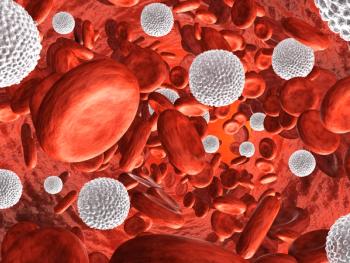
Impact of Checkpoint Blockade Therapy on Subsequent Treatment in Non-Hodgkin Lymphoma Patients
Research presented at ASH 2018 examined whether checkpoint blockade therapy sensitizes patients with relapsed/refractory NHL to consequent treatment.
Treatment with checkpoint blockade therapy (CBT) may sensitize non-Hodgkin lymphoma (NHL) patients with relapsed/refractory (R/R) disease to subsequent treatment. The findings (
Salvage therapy outcomes in R/R NHL patients are suboptimal. Although CBT has been examined in this population, response rates to single-agent CBT therapy have been limited. Carreau et al are the first to examine whether treatment with CBT sensitizes R/R NHL patients to subsequent treatment.
In the current large multicenter retrospective analysis, the team mined US and Canadian medical records for 42 NHL patients (median age, 62 years; 26 men) who received therapy subsequent to CBT. The investigators assessed survival status for the subjects and stratified them using post-CBT treatment regimen categories and disease subgroups via the Kaplan-Meier method. They determined progression-free survival (PFS) and overall survival (OS) for subjects with at least stable disease (SD) through post-CBT treatment.
In patients with complete remission, partial response, or stable disease after receiving CBT therapy, the median PFS was 12.5 months. Median overall survival was not reached. The researchers found that specific post-CBT treatment regimen did not influence survival outcomes, and CBT may sensitize some R/R NHL patients to subsequent therapy, even if they progress or do not respond to CBT. They also found no association between post-CBT treatment response and post-CBT regimens.
“In many patients, the post-CBT treatment responses with or without SCT [stem-cell transplant] were of a significantly greater duration than their pre-CBT DOR [duration of response] (2 months vs 1 year),” concluded the authors. “For this population, especially if they are ineligible for SCT [stem cell therapy] or CAR-T cell therapy, this may be a novel treatment approach.”
In an interview with Cancer Network,
“The authors note a high response rate to treatments subsequent to checkpoint blockade therapy, but there is no historical comparison to tell us what we should have expected in this population. As a result, it is difficult to know how significant this data is. There are no other studies for comparison. This will require more investigation,” Kahl noted.
Newsletter
Stay up to date on recent advances in the multidisciplinary approach to cancer.

















































































